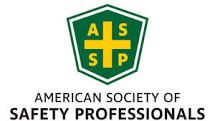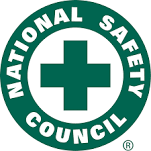OSHA’s Multi-Employer Citation Policy and Construction Sites: Who Is An Employer?
Since OSHA’s mission statement is “to assure safe and healthful working conditions for working men and women,” it’s no surprise that its enforcement authority generally rests with citing employers. The Occupational Safety and Health (OSH) Act requires “each employer” to comply with OSHA standards. Construction is no different—29 CFR 1910.12 obligates each “employer” to protect “employees engaged in construction work” and to comply “with the appropriate standards.” OSHA’s multi-employer citation policy (MECP), however, dictates that up to four separate entities all may be cited—and recognized as an employer—in connection with any one incident.
Four Employers for the Price of One
On multi-employer worksites, OSHA recognizes four types of employers: creating, controlling, exposing, and correcting. A creating employer causes a hazardous condition that violates an OSHA standard. An exposing employer is one whose own employees are exposed to the hazard. In certain cases, one employer may be deemed both a creating and exposing employer. A correcting employer is responsible for correcting a worksite hazard—and usually installs and/or maintains safety equipment or devices.
The last category, a controlling employer, is the employer who has general supervisory authority over the worksite, including the power to correct safety and health violations or require others to correct them. Control can be established by contract or, in the absence of explicit contractual provisions, exercising control at the worksite. A controlling employer is required to exercise reasonable care to prevent and detect violations onsite. Oftentimes, it’s this last category that causes the most surprise and catches general contractors, or even owners.
Potential Exposure as a Controlling Employer
A two-step process must be followed to determine whether an employer is subject to liability under the MECP. The first is to determine whether the entity is a creating, exposing, correcting, or controlling employer under the facts and circumstances of the matter. If met, the second step is to determine if the entity’s actions were sufficient to meet its obligations under OSHA.
An owner, general contractor, or other entity may be deemed a controlling employer provided it retained a sufficient level of general supervisory authority over the worksite, including supervising site safety and health issues. Once determined to be a controlling employer, the entity must exercise reasonable care to prevent and detect violations onsite, including conduct inspections. So, what is the standard of care?
According to a 1999 OSHA directive, factors impacting how frequently and closely a controlling employer must conduct inspections to meet this standard include the scale of the project; the nature and pace of the work—including how often the number or types of hazards change; and how much the controlling employer knows about the safety history and practices of the employer it controls, including its level of expertise.
More frequent inspections may be required if the controlling employer knows the other employer has a history of non-compliance. Less frequent inspections are likely to be warranted where the controlling employer has strong indications the other employer has implemented effective safety and health efforts—for example, a high level of safety compliance, regular jobsite meetings, and safety training.
Best Practices
Owners and general contractors should carefully consider the subcontractors with whom they contract. This requires looking at more than just rate-based data such as TRIR, DART, and EMR, but also additional safety metrics tied to leading indicators (e.g., number of near misses, safety observations, inspections/audits, and/or corrective actions taken). Additional best practices include conducting pre-bid and pre-construction meetings to discuss safety issues and policies; emphasizing the importance of safety at job meetings; and requiring contractors to conduct inspections and safety meetings.
Source: https://osharegulationsblog.com/oshas-multi-employer-citation-policy-and-construction-sites-who-is-an-employer/






